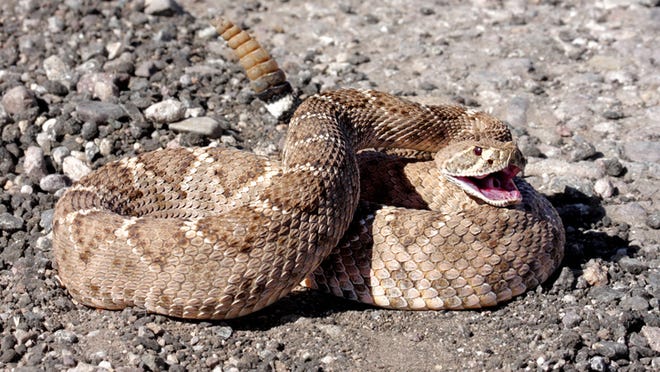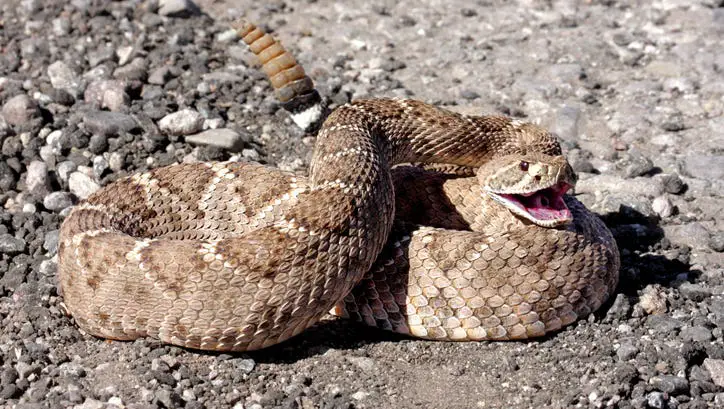Arizona is a beautiful place, known for its diverse wildlife. However, among the many creatures that call this state home, the rattlesnake is perhaps one of the most notorious. Many people wonder when these venomous snakes are most active, and what precautions they should take to avoid them.
The answer to this question is not straightforward, as it depends on a variety of factors. In this article, we will explore when rattlesnakes are most likely to be out and about in Arizona, what to look out for, and how to stay safe in rattlesnake territory. So, if you’re planning a hike in the Grand Canyon State, read on to learn more about these fascinating creatures.
Rattlesnakes are most active in Arizona during the spring and fall seasons. During these times, the weather is warm enough for them to come out of hibernation and hunt for food. Rattlesnakes are often found in rocky areas and near water sources. It’s important to be cautious when hiking or camping in these areas and to always be aware of your surroundings.

When Are Rattlesnakes Most Active in Arizona?
Rattlesnakes are a common sight in Arizona, and while they are fascinating creatures, they can also be dangerous. Understanding when they are most active can help you avoid encounters and stay safe. In this article, we will explore when rattlesnakes are most active in Arizona.
Spring and Summer Months
During the spring and summer months, rattlesnakes are most active in Arizona. This is because the weather is warmer, and the snakes are able to come out of hibernation. Rattlesnakes are ectothermic, which means they rely on external sources of heat to regulate their body temperature. As the temperatures rise, rattlesnakes become more active and seek out food and water.
During the spring and summer months, rattlesnake activity is highest during the early morning and late afternoon. This is when the temperatures are most comfortable for them. However, you should still be cautious during the day, as rattlesnakes can be active at any time.
To avoid encounters with rattlesnakes during the spring and summer months, it is important to be aware of your surroundings. Stay on designated trails when hiking, and avoid tall grass and rocky areas where snakes may be hiding.
Fall and Winter Months
During the fall and winter months, rattlesnakes become less active in Arizona. As the temperatures drop, they begin to prepare for hibernation. This means they will be less likely to be seen, but it is still important to remain cautious.
Rattlesnakes may still be active during warm spells in the fall and winter months. It is important to be aware of the temperature and avoid areas where snakes may be hiding. If you are hiking, stick to designated trails and avoid walking through tall grass or rocky areas.
Benefits of Rattlesnakes
While rattlesnakes can be dangerous, they also play an important role in the ecosystem. They are predators and help control the populations of rodents and other small animals. Without rattlesnakes, these populations could grow out of control and cause damage to crops and other plants.
Rattlesnakes also have medical benefits. Their venom has been used to develop antivenom for snake bites, and it may have potential uses in treating certain medical conditions.
Rattlesnakes vs. Other Snakes
Rattlesnakes are often confused with other snakes, such as gopher snakes and bull snakes. While these snakes may look similar, there are some key differences.
One of the most obvious differences is the rattle on the end of the rattlesnake’s tail. This rattle is made up of interlocking segments that vibrate when the snake shakes its tail. Other snakes do not have this feature.
Another difference is the shape of the head. Rattlesnakes have a triangular-shaped head, while other snakes have a more rounded head.
It is important to be able to identify the differences between rattlesnakes and other snakes to avoid confusion and stay safe.
What to Do if You Encounter a Rattlesnake
If you encounter a rattlesnake in Arizona, it is important to remain calm. Do not approach the snake, and give it plenty of space to move away. If you are hiking, move slowly and carefully away from the snake.
If you are bitten by a rattlesnake, seek medical attention immediately. Do not attempt to suck out the venom or use a tourniquet. These methods can do more harm than good.
Conclusion
Rattlesnakes are fascinating creatures that play an important role in the ecosystem of Arizona. By understanding when they are most active and how to avoid encounters, you can stay safe while enjoying the outdoors. Remember to remain aware of your surroundings, stick to designated trails, and give snakes plenty of space to move away.
Frequently Asked Questions
Question 1: What is the range of rattlesnakes in Arizona?
Rattlesnakes are found throughout Arizona, from the deserts to the mountains. They are most commonly found in the southern and central parts of the state.
These snakes prefer hot, dry climates and are often found in rocky areas, near water sources, or in areas with plenty of vegetation for them to hide in.
Question 2: What types of rattlesnakes are found in Arizona?
There are several species of rattlesnakes found in Arizona, including the Western Diamondback, Mojave, Sidewinder, and Black-tailed rattlesnakes. Each species has its own unique characteristics and habits.
The Western Diamondback is the most commonly encountered species and is easily recognized by its distinct diamond-shaped pattern on its back.
Question 3: What time of day are rattlesnakes most active in Arizona?
Rattlesnakes are most active during the warmer months, typically from April to October. They are generally more active during the cooler hours of the day, such as early morning or late evening.
During the hottest parts of the day, they will seek shelter in shaded areas or underground to avoid the heat.
Question 4: How do I avoid encountering a rattlesnake in Arizona?
To avoid encountering a rattlesnake in Arizona, it’s important to be aware of your surroundings and take precautions. Wear closed-toe shoes and long pants when hiking or walking in areas where rattlesnakes are known to live.
Be mindful when walking through rocky or brushy areas and use a hiking stick to scan the ground ahead of you. Avoid putting your hands or feet in areas where you can’t see.
Question 5: What should I do if I encounter a rattlesnake in Arizona?
If you encounter a rattlesnake in Arizona, it’s important to remember to stay calm and give the snake plenty of space. Back away slowly and avoid making sudden movements or loud noises.
Do not attempt to handle or kill the snake, as this could result in serious injury or death. Instead, contact a professional snake removal service to safely remove the snake from the area.
Rattlesnakes of Arizona – 9 species of venomous pit vipers from Sonoran desert
In conclusion, rattlesnakes are most active in Arizona during the warmer months of the year, typically from April to October. During this time, they are often found basking in the sun on rocks or other warm surfaces, or hunting for prey in the cooler hours of the day. It is important to be aware of their presence and take precautions when hiking or exploring in rattlesnake territory, such as wearing sturdy shoes and staying on designated trails.
While encountering a rattlesnake can be scary, it is important to remember that they play a crucial role in the ecosystem and should be respected from a safe distance. If you do come across a rattlesnake, give it plenty of space and avoid disturbing it, as they will typically only strike if they feel threatened or cornered. By staying informed and taking precautions, you can safely enjoy the natural beauty of Arizona while also respecting the wildlife that calls it home.


